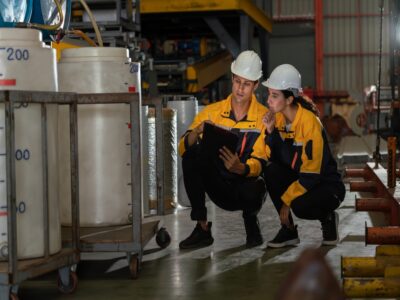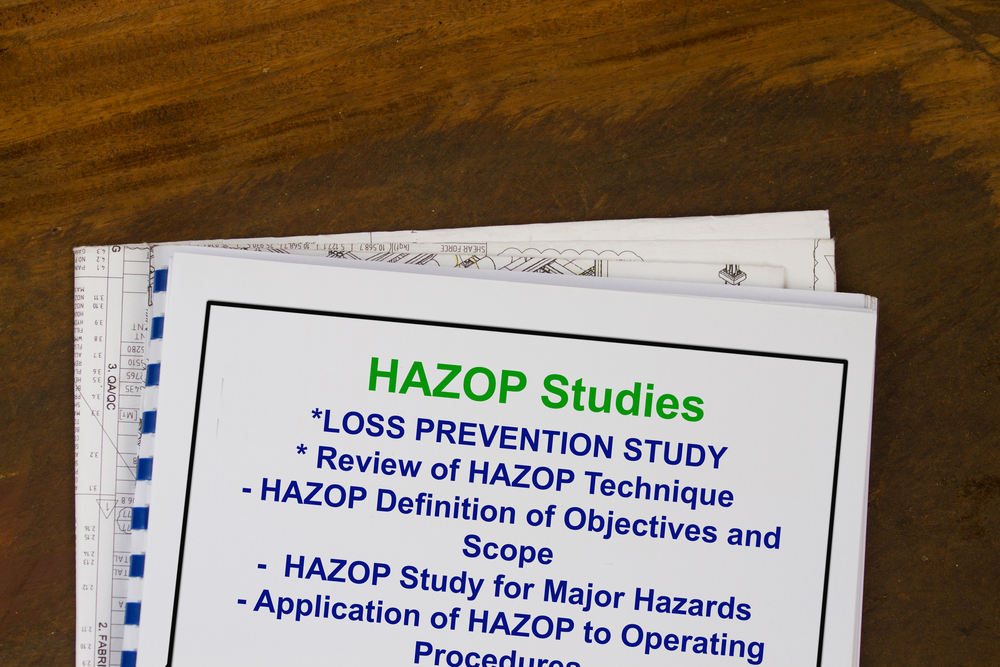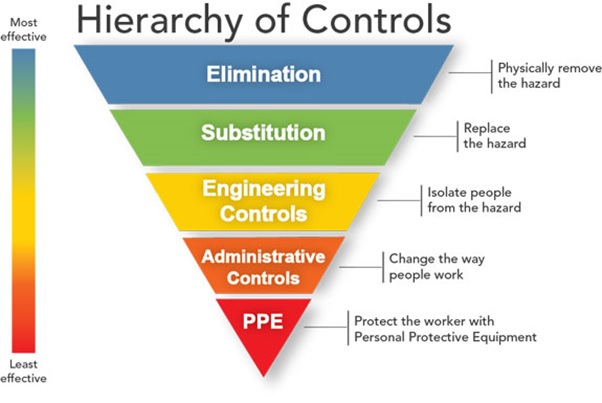Search
When a Checklist Isn’t Enough: Choosing the Right Process Hazard Analysis (PHA) Approach for Your Industry

Process Hazard Analysis (PHA) is the cornerstone of effective process safety management (PSM), yet many organizations rely on generic or outdated approaches that may fall short of modern expectations. Whether you’re operating in pharmaceuticals, chemicals, powder handling, or food processing, understanding which PHA method suits your operation best can mean the difference between preventing an incident and reacting to one.
What Is a Process Hazard Analysis (PHA)?
A Process Hazard Analysis (PHA) is a systematic method used to identify and evaluate the potential hazards associated with industrial processes. The goal is to proactively recognize risks and ensure appropriate controls are in place to protect people, equipment, and the environment. PHA is a fundamental part of Process Safety Management (PSM) programs and is legally required in many jurisdictions, including under OSHA’s 29 CFR 1910.119.
Summary of Common PHA Methods:
Checklists
- What it is: Checklist Analysis uses pre-defined questions to guide the hazard identification process.
- Pros:
- Simple and easy to use.
- Great for repetitive or well-documented systems where known risks are the main concern.
- Cons:
- Limited by the quality and relevance of the checklist itself.
- May miss lesser-known or process-specific hazards.
- Not as well-suited for complex or novel systems.
What-If Analysis
- What it is: A brainstorming method where team members ask “what if” scenarios to uncover potential deviations and hazards.
- Pros:
- Very flexible.
- Ideal for simpler processes or facilities with limited historical data.
- Good for early-stage designs.
- Cons:
- Less structured, so can potentially miss hazards due to a lack of rigor.
- Quality depends on team experience.
- Difficult to track completeness.
LOPA (Layers of Protection Analysis)
- What it is: Semi-quantitative method that evaluates the risk of a hazard scenario and the effectiveness of independent protection layers.
- Pros:
- Quantifies risk for better decision making.
- Helps justify safety instrumented systems (SIS).
- Bridge between qualitative methods and quantitative risk assessment.
- Cons:
- Requires accurate data and defined initiating events.
- Assumes independence of protection layers.
- Not well-suited to identifying unknown hazards (used after hazard identification).
HAZOP (Hazard and Operability Study)
- What it is: A structured and systematic technique using guidewords to explore deviations from normal operation.
- Pros:
- Highly effective for complex systems (like chemical or pharmaceutical processes).
- Detailed and thorough.
- Effective in identifying both safety and operability issues.
- Fosters cross-functional collaboration.
- Cons:
- Time-consuming.
- Requires an experienced facilitator and team with subject matter expertise.
- Can be tedious for large systems.
FMEA (Failure Modes and Effects Analysis)
- What it is: Focuses on identifying how individual equipment or components might fail and what the consequences could be.
- Pros:
- Good for equipment or mechanical systems.
- Helps prioritize issues based on severity, occurrence and detection.
- Quantitative nature helping for risk ranking.
- Cons:
- Time-consuming, especially for large systems.
- Focuses more on individual components than on system-wide interactions.
- Doesn’t always effectively capture external events or human errors.
Fault Tree Analysis (FTA)
- What it is: A top-down approach starting from an undesirable event and working backward to determine all possible causes.
- Pros:
- Useful for root cause analysis and understanding incident pathways.
- Visually represents complex logic.
- Useful for risk assessment.
- Cons:
- Requires specialized knowledge.
- Can be complex and data intensive.
- Not ideal for desigh-stage processes.
References:
- OSHA Process Safety Management (PSM) Standard – 29 CFR 1910.119
- CCPS Guidelines for Hazard Evaluation Procedures, 3rd ed.
Why One Size Doesn’t Fit All
Selecting the right PHA method depends on your industry, materials, and process complexity. Applying the wrong method—or applying the right one without adaptation—can lead to overlooked hazards or wasted resources.
Summary of Tailored Approaches:
- Pharmaceutical plants
These often involve flammable solvents and highly reactive compounds. A detailed HAZOP or a Quantitative Risk Assessment (QRA) may be necessary to fully evaluate risk scenarios, particularly during scale-up or cleaning operations.
- Food manufacturers
Many handle powders that pose combustible dust risks. A What-If analysis combined with Dust Hazard Analysis (DHA) ensures scenarios like dust accumulation, ignition sources, and inadequate housekeeping are addressed.
- Chemical processors
When scaling up from lab to production, combining What-If and FMEA helps capture both process deviations and equipment-specific failure modes. This approach highlights where controls or design changes may be needed before full
Real-World Example: When a Generic Checklist Missed an Important Hazard
A client had undertaken a What-If analysis as the PHA methodology of choice for a chemical process containing a toxic gas. A leak in the compressor room was identified as a failure scenario and addressed by a number of safeguards, including increased ventilation airflow rate. That’s where the What-If checklist stopped.
The team who relied on the checklist did not continue to identify the secondary and tertiary failure modes, such as “what if the ventilation fan drive belt breaks when the fan-on signal comes from the fan motor?” The control system “infers” there is airflow because the motor is running, whereas the blower fan is not generating airflow because the drive belt is broken. A true HAZOP with an experienced team would have continued the failure scenario cause analysis to identify how the ventilation airflow could be lost without detection. A HAZOP would have likely concluded and recommended that a “proven” airflow strategy to be used such as an airflow switch designed with adequate safety integrity level (SIL).
Common Pitfalls in Process Hazard Analysis
Even experienced companies fall into PHA traps, often because processes evolve faster than the hazard analysis that supports them. Here are common missteps and why they matter:
Summary of Common Pitfalls:
- Using the same method for every process
For example, applying a checklist to a complex solvent recovery system could miss interactions between units, leading to unaddressed runaway reactions.
- Excluding maintenance or operations staff
A team without frontline experience may miss practical issues like misaligned valves or inaccessible isolation points.
- Overlooking emerging hazards
A facility handling fine powders may not recognize combustible dust hazards without explicit focus—leading to serious fire or explosion risks, as documented in multiple CSB reports.
- Failing to act on recommendations
A well-documented HAZOP is only useful if follow-up actions are tracked, closed out, and reflected in training and procedures.
Reference:
- U.S. Chemical Safety Board (CSB) Incident Reports
When to Revalidate or Rethink Your PHA
Revalidating your PHA ensures that it reflects the current state of operations and hazards. Over time, process changes, equipment updates, and even staffing shifts can create gaps in risk coverage.
For example, a dust collector added to improve air quality might change airflow patterns, increase dust accumulation, or introduce ignition risks—all of which might be missed without a fresh hazard review.
Summary of Revalidation Triggers:
- PHAs must be revalidated at least every five years
- Revalidation is needed after significant process changes
- Near misses or safety audit findings may signal deeper issues
- Changes in standards, codes, or company policy should prompt review
Reference:
- CCPS – Guidelines for Revalidating Process Hazard Analyses, AIChE
How Stonehouse Helps You Get It Right
At Stonehouse Process Safety, we bring decades of experience in facilitating and auditing PHAs across high-hazard industries. Our experts:
- Select or combine the most appropriate PHA methods
- Lead cross-functional teams through effective hazard identification
- Understand niche challenges, such as electrostatics, combustible dusts, and thermal instability
- Provide practical, standards-compliant recommendations
FAQs: Process Hazard Analysis (PHA)
What is the difference between PHA and HAZOP?
HAZOP is a type of PHA—specifically a structured method for analyzing process deviations and consequences.
When should a company use FMEA instead of HAZOP?
FMEA is often better for equipment-level analysis, especially in early design. HAZOP is better for process-level evaluations with multiple interacting systems.
How often should a PHA be reviewed?
Every five years, or sooner if the process changes significantly.
Can a checklist alone satisfy PHA requirements?
Rarely. Checklists are only appropriate for simple, well-understood systems with minimal hazard.
Get Expert Support
Need to revisit your approach to Process Hazard Analysis? Let us help you select the right tools for the job. Whether you’re dealing with complex chemical systems or dust-prone processes, our team will guide you to a safer, more compliant operation.
Contact Stonehouse Process Safety to schedule a consultation.

Get in touch
To learn more about our expertise and services in dust explosion prevention & mitigation, call us at +1 609 455 0001 or email us at [email protected] today.
We also offer tailored virtual and in-company process safety training programs on Dust Explosions, Static Electricity and HAC (Hazardous Area Classification) and more. Find further information here.










